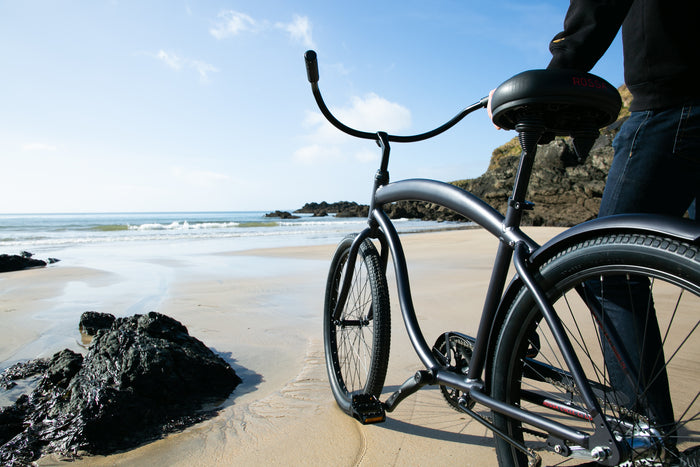Riding High: The Surging Popularity of Beach Cruisers in the USA

The allure of a beach cruiser bicycle, with its laid-back style and easy-going attitude, has captured the hearts of countless Americans. In recent years, these classic two-wheelers have experienced a resurgence in popularity, making them a staple of leisurely rides along coastal paths, boardwalks, and city streets. In this blog, we'll explore the growing fascination with beach cruisers in the USA and the factors contributing to their remarkable sales figures.
The Revival of Beach Cruisers
Beach cruisers, also known as cruiser bikes or simply cruisers, trace their roots back to the 1930s and 1940s when they were popularized as the ideal choice for relaxed rides along the beach. Their distinctive design features, such as wide handlebars, comfortable saddles, and balloon tires, made them the go-to option for casual cycling.
After a period of relative obscurity, beach cruisers experienced a revival in the late 20th century. Riders were drawn to their comfortable, upright riding position, making them perfect for short trips, errands, and leisurely explorations. Their timeless style and effortless riding experience contributed to their resurgence.
The Beach Cruiser Boom
In recent years, the beach cruiser market in the USA has seen a significant boom in sales. Several factors have contributed to this surge:
-
Sustainable Transportation: As more people seek eco-friendly transportation options, beach cruisers have gained favor due to their zero emissions and minimal environmental impact.
-
Health and Wellness: The COVID-19 pandemic prompted many Americans to embrace outdoor activities, including cycling. Beach cruisers, with their comfort and approachability, became a popular choice for riders of all ages looking to stay active and enjoy the outdoors.
-
Retro Appeal: Nostalgia plays a significant role in the beach cruiser resurgence. Many riders appreciate the vintage charm and classic aesthetics of these bikes, evoking a sense of simpler times.
-
Urban Commuting: In cities across the USA, beach cruisers have become a practical and stylish choice for short-distance commuting. Their relaxed riding posture and ability to handle diverse terrain make them versatile options for urban dwellers.
-
Customization and Accessories: The beach cruiser market has responded to consumer demand by offering a wide range of customization options, from colorful frames to decorative accessories. This personalization has further fueled interest in cruisers.
Sales Figures on the Rise
Exact sales figures for beach cruisers can be challenging to pinpoint due to the variety of brands and models available. However, industry reports and trends indicate a significant increase in sales over the past few years.
Several bicycle manufacturers and retailers have reported substantial growth in their cruiser bike sales, with some experiencing year-over-year increases of 30% or more. The surge in demand has prompted established bicycle companies and startups alike to invest in designing and manufacturing beach cruisers to meet consumer preferences.
Conclusion
The beach cruiser, once considered a relic of the past, has firmly reestablished itself as a beloved icon of leisurely cycling in the USA. Its blend of comfort, style, and nostalgia has captured the hearts of riders seeking an enjoyable and eco-conscious mode of transportation. As the trend continues to grow, it's clear that beach cruisers are not just bicycles; they're symbols of a lifestyle that values relaxation, wellness, and the simple joy of pedaling along the coast or through city streets.

